Hannah's Journey with Hip Dysplasia
Yes, I know - it's been almost a YEAR since my last post!! So much has happened. Hannah is now ONE, and is a beastly mini-toddler who uses sign language (mostly the word "more") and eats things like chili and whole milk. And is almost walking(!!). We cherish every second with her.
As for me - I took some time off from photography. For many reasons - but the biggest was to see Hannah through an unexpected, trying time as she went through treatment for hip dysplasia throughout her first year of life. I wanted to share our story here. When Hannah was first diagnosed with hip dysplasia, and through her treatment with a spica cast, I found much comfort in reading the blogs of other mothers whose babies were going through similar treatments. They shared their feelings, their fears, their joys, and their tricks - and trust me, when you're dealing with a baby in a body cast - there are TONS of tricks to be learned! It's my hope that a mother in need will find similar comfort and advice in our story.
Photography disclaimer - this is a photography blog, but most of these photos were taken with my iPhone. When you're a mom with a hip kid - or just a new mom in general - sometimes the big rig sits in the closet!
********
The day Hannah was born, she got a once-over by the on-call pediatrician at the hospital. She pronounced our daughter to be in perfect health, except for a slight click felt in one of her hips. The next day, the pediatrician retested her, but didn't feel that click. Nor did she feel it for two days after that. Nor did our family doctor feel it at Hannah's one-week appointment. Still, at the recommendation from the first day's pediatrician, we followed up with a pediatric orthopedic doctor. I thought nothing of it. I had been told that some newborns' hips can seem "clicky" but typically stabilize quickly and it was probably nothing to worry about.
Boy was I wrong. Hannah was 11 days old when we went to have the pediatric orthopedist double check her hips. We left that appointment knowing that both of her hips were dislocated. The diagnosis was bilateral developmental dysplasia of the hip (DDH), and Hannah was strapped into a Pavlik harness to be worn 24/7 for the next week. No taking it off. Not for baths, not for diapers. Not for cuddles or breastfeeding. No. Taking. It. Off. This is the photo I managed to take in that moment, to remind us of what it looked like if for some reason the straps got messed up.


From the second they put the body harness on my tiny newborn daughter, I morphed into a bawling postpartum hormonal wreck. I spent the better part of that next couple days crying into her soft brown hair and finding the places through the harness that I could touch her sweet little body, not velcro or elastic. I grieved that my soft, squishy, cuddly baby was strapped into this contraption that made her stiff and awkward. We had to put away her newborn clothes and find things that would fit. We had to diaper her under the straps, and they chafed her delicate skin. Despite the situation, she was pretty much fine. She was a bit fussy, and had a hard time sleeping that first night, but for the most part she dealt with it like a champ all week. And was still the most beautiful, precious thing under the sun.


I counted the minutes until the next week's appointment. That day we would be allowed to take the harness off ourselves in the morning, cuddle and bathe her at home, and then go back to the doctor to have it re-adjusted and re-applied for another week. I woke up and literally hopped out of bed for the first time since having my c-section. We got the camera out, and made great fanfare of running her a bath and stripping the harness off for cuddles and pictures. Except something wasn't right. Curtis noticed it before I did.
"Why isn't she moving her right leg?"
We figured she was just stiff from the harness. But despite tickling and stretching, she would not kick her right leg out. A frantic call to the doctor, and they worked us in early. To make a long story short, the doctor we were with called this turn of events "unexpected" and the concern in her voice was clear. To rule out an infection and subsequent paralysis of the hip, the next two hours were spent in an ultrasound that was clearly painful for Hannah, and then two failed attempts at a venous blood draw to check for bacteria in the bloodstream. They couldn't get one of her tiny veins to give them blood, and settled for a heel stick to check her blood count. We were shell-shocked from holding our newborn down for all the poking and prodding. That was the day I learned her pain cry. The doctor finally called her superior, who diagnosed it immediately as a femoral nerve palsy, a temporary paralysis of the femoral nerve that was a rare, but known complication of the Pavlik harness. We were on our way to a second opinion by noon the next day.
Our new doctor was familiar with the femoral nerve palsy, and guaranteed us that her leg would recover. We got a new brace, the "rhino cruiser," and new information from a new ultrasound. Hannah's hips weren't just dislocated. They were shallow. Very shallow. We were told that without treatment, Hannah would likely need a hip replacement by the time she was in high school. She wasn't in any pain now, but that would change as her body grew and bones solidified into immature hip sockets. Our saving grace was the pediatrician who caught her condition on day 1. She was so tiny, and her little hips so full of cartilage, that we stood an excellent chance of giving her healthy hips with the appropriate treatment. Eventually, she'd ski, she'd hike, she'd dance - without pain.
Her leg did recover. It took about two weeks. Her new Rhino brace - shown below, and affectionately deemed her "bucket" by her Paw-Paw - was less awkward than the pavlik harness, and we were able to take it off for diaper changes and baths. She learned to rock and roll and play over the next couple months. It put her left hip on the road to recovery, and I'm so pleased to report that her left hip likely won't need additional interventions!
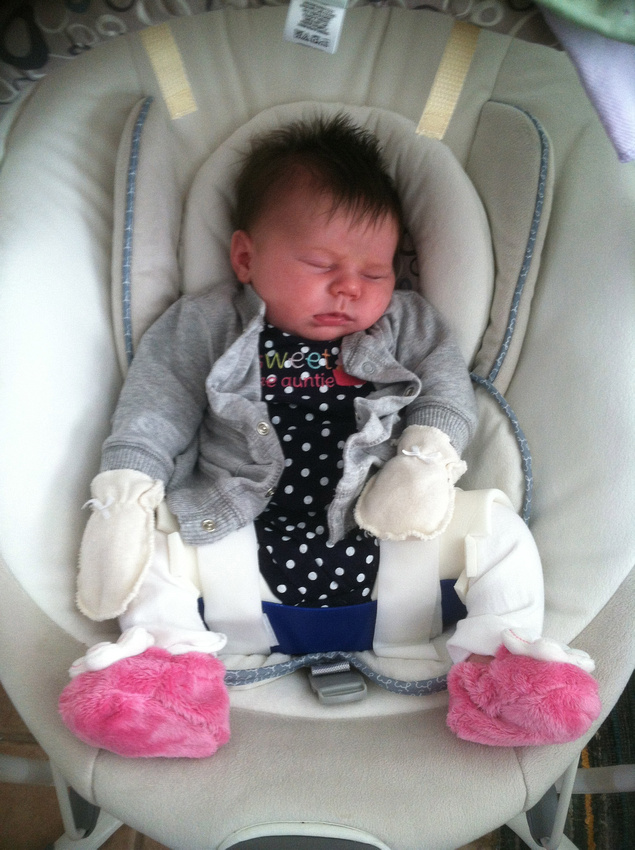











Her right hip - well, that's another story. When she had the femoral nerve palsy in the right leg, my research turned up a paper that concluded babies that developed femoral nerve palsies were less likely to get healthy hips from bracing alone. That proved to be the case with Hannah. At six months she had a successful closed reduction of her right hip under general anesthesia (which, for me - was the most terrifying part of the whole thing). Between the ages of 6 months and 9 months old, she was in a spica cast - a plaster cast that went from her chest to her ankles, with a hole for the diaper. It was an enormously trying time, and required us to basically change everything we were doing from playtime to diaper changing to sleeping and dressing. But with some amazing support from friends - old friends at home, and new friends on the DDH Facebook groups - we got through it. The spica came off right before Christmas - and it worked to stabilize that right hip! The doctor could no longer maneuver it out of socket. A HUGE step forward for my baby girl!
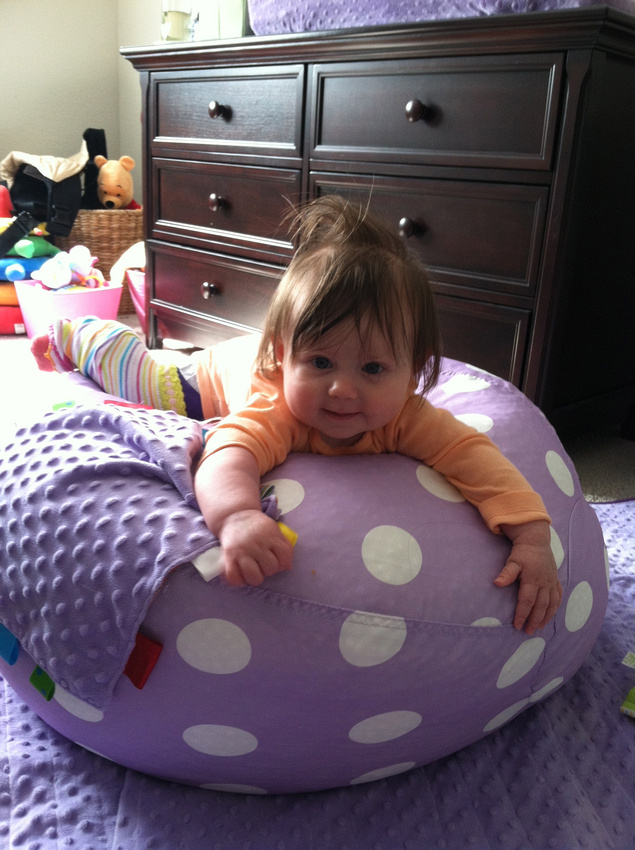

And through all of this, Hannah has shown us the very definition of tolerance, patience, and bravery. It was always me crying... never her. She smiled at the nurses, smiled at the doctors, and carried on in her chill, merry way through the whole ordeal. She's amazing - after a few tense moments, the child even SMILED through her cast removal! And now - she's mobile! She crawled just a month after the cast was off, and now four months later is trying her darndest to walk!
Unfortunately Hannah isn't out of the woods yet. Her right hip is still super shallow and hasn't developed quite the way it should. We're hopeful that once she begins walking, the pressure on the hip socket will function to speed its development along. It's very possible that will be the case! If not... well... we're not going there just yet. We're praying hard that our little hippie girl turns a corner. We are forever grateful to her team at Rocky Mountain Pediatric Orthopedics for taking such wonderful care of Hannah through all of this. Dr. Benson, Dr. Riley, Nancy the ultrasound queen/baby whisperer, the PAs, assistants, nurses at the surgery center at Rocky Mountain Hospital for Children in Denver .. thank you from the bottom of our hearts!
And to the moms (and dads!) who find this blog entry... I feel your fear, and offer you hope. There is a light at the end of the DDH tunnel even though that tunnel is very, very long for some of us. I pasted some additional photos below to show some of the adaptations we employed - bean bag, Ergo (which she LOVED while in the spica), spica chair, dog beds, wedge pillow for sleeping, leg warmers, BabyHomeEat high chair, what tummy time looked like... ending with the cast-off day, a photo of Hannah just days after her cast removal, and a recent picture of our mobile girl. Please feel free to leave a comment or a question and I'll get back to you and share everything I know.
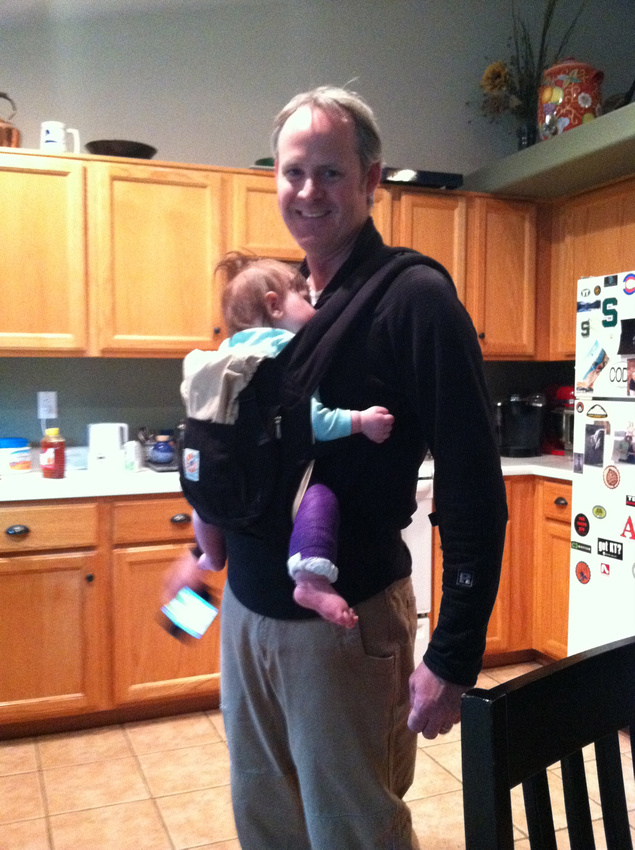











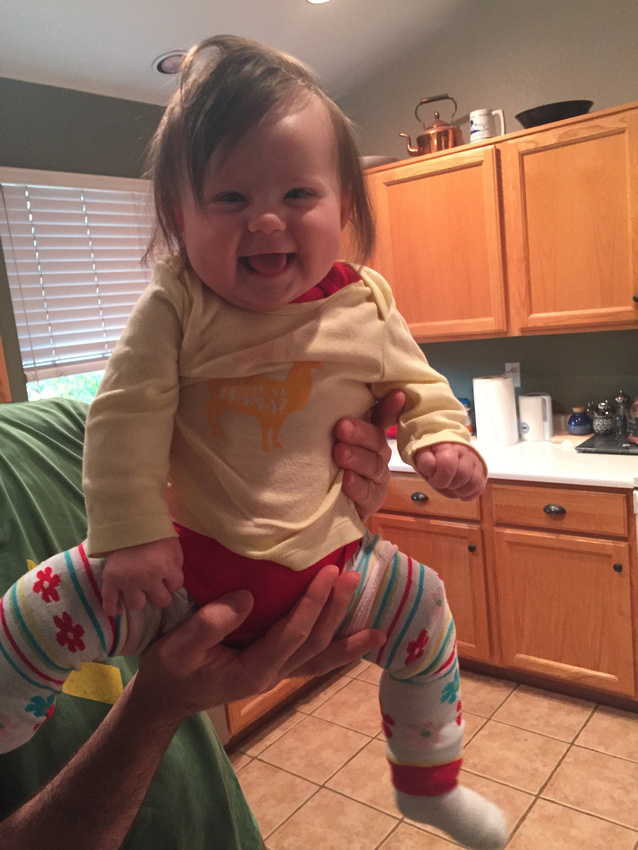











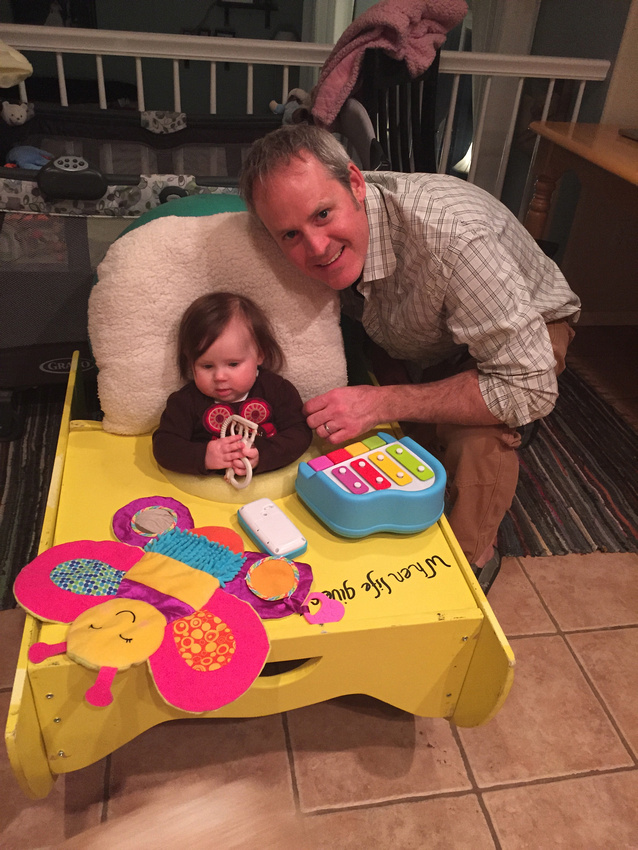



















And while Curtis and I feel like we've been through a lot with Hannah's hip issues, we know our experience doesn't hold a candle to the moms and dads out there who deal with life-threatening situations with their babies. We send light, love and prayers to all of you.
XO
Tara
Comments
Candace -- saying a prayer for your family and your baby girl that her surgery was successful, her discomfort minimal, and her recovery is lightning fast!! Even in the early days I felt so selfish for crying over something treatable... but no parent wants to see their precious babe go through all this. So grateful for the support of the DDH community - it's so much easier to get through with support from other parents!